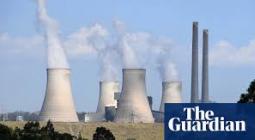They Fell Sick After Cleaning Up a TVA Toxic Disaster. A New Book Details Their Legal Battle
“Valley So Low” covers a decade-long courtroom drama stemming from the 2008 disaster that helped nudge the EPA into adopting its first national regulations of coal ash.
Before then, relatively few people in the United States knew or thought much about the residue left behind at the hundreds of power plants that were then burning coal—even though it amounted to one of the largest sources of industrial waste. For a report I did in 2002 when I worked for The Courier-Journal in Louisville, Kentucky, an engineering expert helped me calculate that one year’s worth of the nation’s coal ash, placed on a football field, would extend more than 11 miles high.
By the early- to mid-2000s, just a handful of environmentalists were trying to get the U.S. Environmental Protection Agency to classify the material as hazardous waste. A few scientists had documented how the toxic chemicals and heavy metals in coal ash were deforming frog tadpoles and fish. And in Pines, Indiana, where coal ash had been used to fill wetlands and build roads, the contamination polluted water wells and resulted in the designation as an EPA Superfund site.
Electric utilities were storing much of their coal ash in leaky, unlined pits, and one of the largest stockpiles was at the Tennessee Valley Authority’s Kingston Fossil Plant, located near Knoxville. When construction was completed in 1955, Kingston was the largest coal-burning power plant in the world—a distinction, according to TVA, that it held for more than a decade.
But in proving the old adage of what goes up must come down, Kingston’s 60-foot-tall mountain of black, sodden ash collapsed in a flash in the dark of night, 16 years ago this week.
Tennessee journalist Jared Sullivan, in his new book, “Valley So Low,” described the moment this way: “When it did, more than a billion gallons of coal-ash slurry—about fifteen hundred times the volume of liquid that flows over Niagara Falls each second—broke forth. A black wave at least fifty feet high rushed northward with the power and violence of water punching through a dam.”
A levee of ash had given way, smothering some 300 acres and spilling into two rivers. Three homes were destroyed and dozens more were damaged. It took seven years, but the disaster prompted the Obama administration to adopt the first national regulations managing coal combustion wastes in 2015, including a requirement for closing unlined ash pits like the one at Kingston.
Published in October by Penguin Random House, “Valley So Low” is a courtroom drama that focuses on a small-town lawyer and his efforts to help the workers who came to clean up the mess, then paid with their health and lives.
The workers won a jury verdict in 2018 that found Jacobs Engineering, TVA’s cleanup contractor, had failed to protect the workers, concluding their exposure to toxic heavy metals and radiation in the coal ash could be responsible for their illnesses, from skin rashes to lung disease to cancer. The litigation ended with a legal settlement.
Sullivan writes in his book that both Jacobs Engineering and TVA, which was not a party in the workers’ lawsuit, disputed much of his reporting. The Associated Press has reported that Jacobs “has always maintained that it safely handled the cleanup and was not at fault for the workers’ illnesses.” It has since rebranded itself as Jacobs Solutions Inc.
In 2023, Jacobs agreed to pay 220 workers a total of $77.5 million, Sullivan reported in his book. “Once the attorneys took their fees—about $26 million—and subtracted their expenses, the workers would be left with roughly $49 million, or about $222,000 each,” Sullivan wrote. “From that sum, they would have to reimburse their insurance companies whatever money they’d spent to cover their medical expenses. The sickest workers, as a result, would likely end up with very little cash.”
I talked with Sullivan this month and asked him about “Valley So Low,” which The New Yorker recently listed as among the best books of 2024. This interview has been edited for length and clarity.
JAMES BRUGGERS: There have been many news stories about what happened at Kingston and how it affected environmental policy, but not as much attention paid to the cleanup workers. Who were these people and how was their health affected?
JARED SULLIVAN: When the coal ash dike collapsed, and this big, almost biblically sized wave swallowed the countryside, it was basically the middle of the Great Recession. A lot of people were out of work.
Union reps started working the phones and calling to get as many people as they could to come to Kingston to start cleaning it up. Many of these workers were delighted to get the call because they were fathers and family men, and they needed the work. So 900 people from across the country descended on Kingston over the next few months.
They were blue-collar guys and mostly men. None of them were going to die rich, but they had made great careers for themselves with their union jobs.
I followed several workers and one of them is this worker named Ansel Clark. Ansel grew up in Knoxville, and he was in his 50s when he first got out there, and he was in good health. The problems started in late 2009 when this coal ash started baking under the Tennessee sun and started blowing around the job site.
That’s when the workers’ health started to deteriorate. At first, they felt sluggish. They started having a hacking cough. They started passing out in their trucks. They started coughing up blood. And then that’s when they knew it was not just them pushing themselves too hard and that something is wrong. And they’ve been told throughout the whole cleanup process that, more or less, in various ways, the ash is safe.
Ansel got congestive heart failure. He got blood cancer. Many other workers had various sorts of cancers and various lung issues. And now, more than 50 of the men who worked out there are now dead.
BRUGGERS: You mentioned 50 workers have died. Is that some sort of official tally? Where did that number come from?
SULLIVAN: I was given a list by the plaintiffs’ attorneys. This is tricky. It’s very hard to conclude in these big cases that your direct exposure caused your death or illness. The whole point of these cases is to prove that, and they never got to that phase—they settled before they could determine damage for each specific person.
But all the workers had medical testing. I’ve seen the reports where they have uranium in their blood. They have high levels of arsenic. I went through and verified that each of these people did, in fact, work at Kingston and in fact, passed away. And that’s the number that Knoxville News Sentinel has also been reporting. So I feel like it’s accurate.
BRUGGERS: A lot of the book focuses on an attorney, Jim Scott, who decides to take on this big federal power company and its major contractor. Tell us about him.
SULLIVAN: He’d worked some big cases over the years, but he had not worked for a big, high-powered law firm. His office, when I met him, was in a very humble strip mall in Knoxville. He has a big heart and he was basically the only person who would listen to these Kingston workers once they fell sick.
They had heard about him through word of mouth, that this guy is a well-meaning attorney and that they should go see him. And they did, and he believed them, and he spent the next 10-plus years of his life dragging their case through federal courts.
It wrecked his life. He went through a horrible divorce. He nearly died. He had a stress-related stroke. He had to move out of his family home. He’s a quirky guy, about five foot eight, and has a mess of hair. The case got thrown out in 2015 and he had the brass to appeal it and take it to the Sixth Circuit Court of Appeals, and was victorious there. And that, much to his credit, speaks to his ability as an attorney.
BRUGGERS: Why did this case take a decade to get to a settlement?
SULLIVAN: The short of it is the TVA contractor had every incentive to drag the case out for as long as possible. They’ve filed a ton of motions attempting to discredit the workers. I feel like they contested almost every single thing that the plaintiffs’ attorneys tried to do for the workers. They got the case appealed to the Sixth Circuit Court of Appeals twice, which every time that happens, that’s an automatic almost like two years added on to the lawsuit.
And their playbook worked. They settled, as I have written, for $77.5 million for about 230 of the plaintiffs, which works [out] to about a couple hundred thousand dollars each. But $77.5 million is a small fraction of Jacobs’ profits in any given year.
Cover photo: A view of homes along the Emory River near Kingston, Tennessee, following the TVA coal ash disaster in December 2008. Credit: Courtesy of Appalachian Voices/Dot Griffith with flight by Southwings



